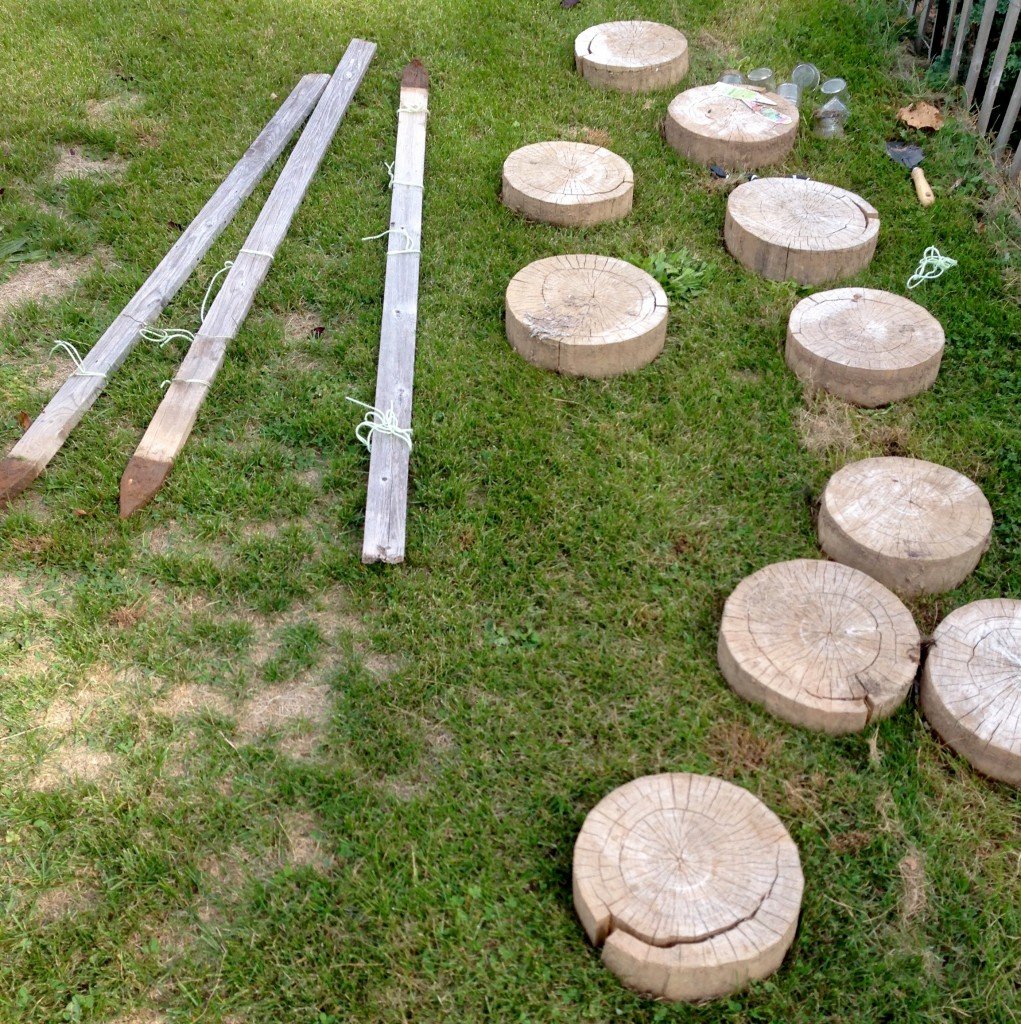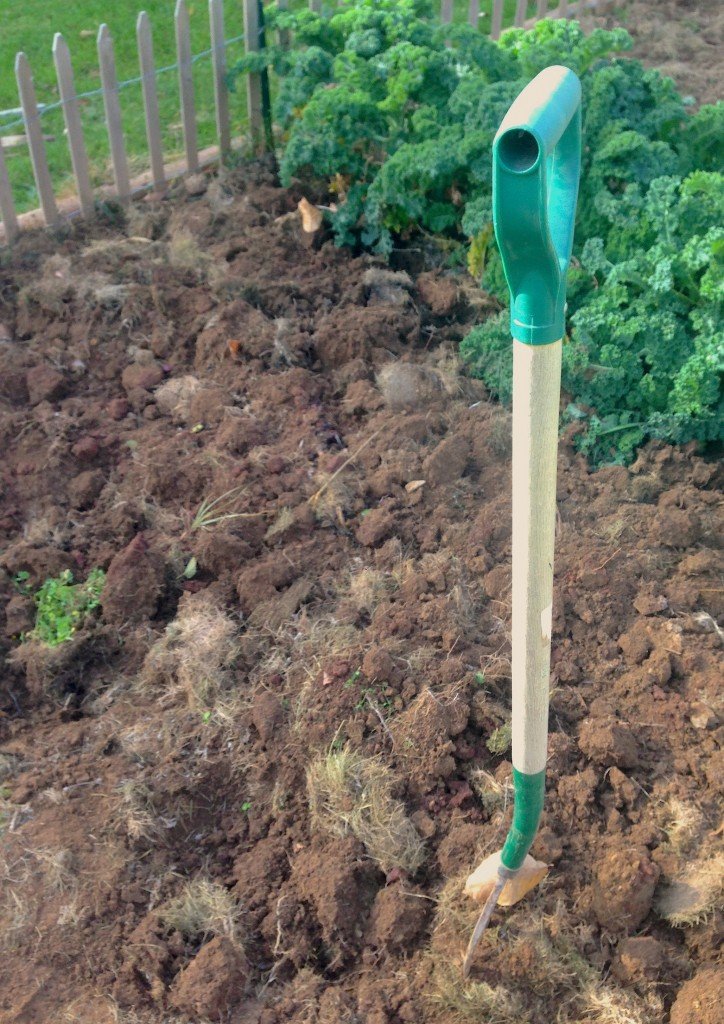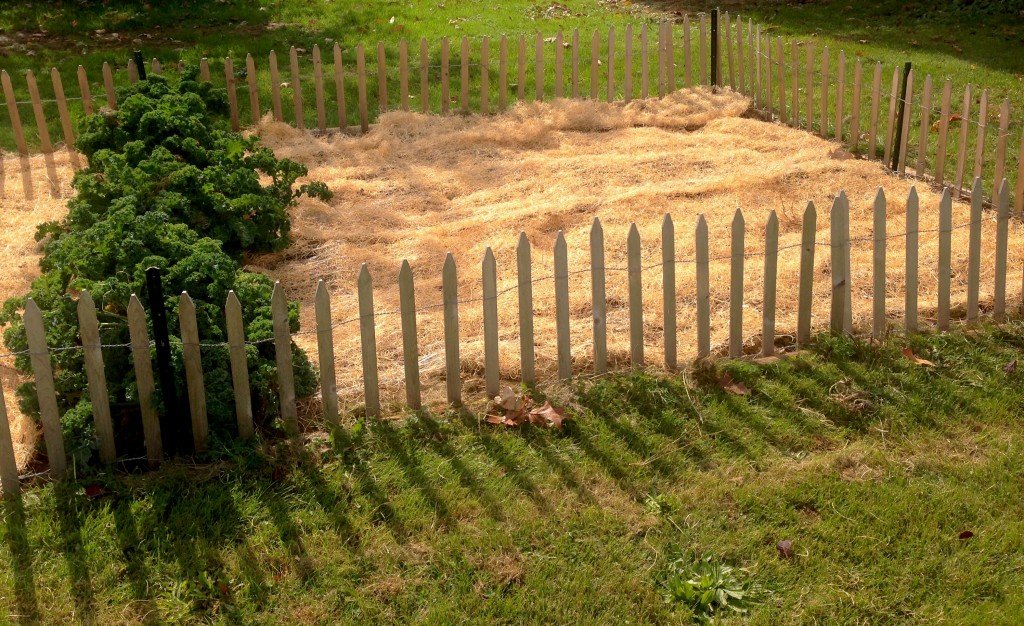
My backyard garden is so embarrassing! Wooden stakes leaning over the falling over wooden fence, posts are missing from my fight with our giant groundhog, tomatoes rotting on the ground—it’s a disaster! In my efforts to finally get the back yard cleaned up, I also learned that you should get your garden ready for winter every fall, so here are a few tips and tricks on how to protect your garden this winter.
Clean Up!
First thing’s first: clean out all the dead plants, pull out the wooden stakes, and get a clean slate in your garden! Throw your dead plants (except for anything that had a blight or disease) and weeds into the compost. That will be some nice soil for you next spring!
If you’ve still got plants growing (like my kale—which, I believe, is going to take over the world!) be sure to work around them.

If you’ve got strawberry plants growing, be sure to work well around them! Did you know that they already have their buds for next spring?! Once things get consistently cold (mid-20’s for 3–4 days in a row), be sure to cover them with a good layer of straw (about 3–6 inches) to protect them. That layer of straw will need to be removed as soon as things start warming up in spring (when the topsoil starts warming up to about 40 degrees).
Stack wooden stakes in the garage or shed so that they don’t weather more than necessary over the winter. I pulled out all my pavers (made from tree stump slices) and stored them out of the weather as well.

Stir It Up
When I was a little girl, I would help dear Mrs. Rudolph out with her gardens; she had the greenest grass and the most beautiful flowers and trees you’ve ever seen. The lady knew what she was doing! She had me pull weeds on a regular basis, but she also had me “stir the dirt” or aerate the soil. She swore that stirring (and singing to the flowers) is what made them grow so beautifully. So, go ahead and belt it while you stir that dirt! If you have a rototiller, that’s awesome—this will be a quick and painless job for you! If not, that’s fine, a potato fork or hoe will do that job.

Add Compost
If you’re anything like me, the garden isn’t the only embarrassment in the back yard—the compost bin is too! It’s overflowing with veggies that I forgot to pick and loads of lawn clippings from when we let the grass go a little too long that one few every time. Go ahead and dump a thick layer of the compost on top of your garden. Rake it out so that it’s fairly even. This should allow the compost to decompose a little faster over the winter. Once spring comes, you should be able to till anything that’s left into the soil. Your plants will thank you!

Cover It
I’m a what I like to call a selective perfectionist. Sure, the garden looked like a disaster for the past 4 months, but NOW it’s got to be perfect. I went ahead and covered my tilled, composted perfection with some straw mats that I had left over from seeding other parts of the lawn. It covers that icky compost and will actually help protect the nutrients in the soil from the sun. You can do the same thing with loose straw, mulch, leaves, or pine needles. Make sure to not do this too early, or you’ll be inviting mice and other critters to live there for the winter.

There you have it! A few hours spent out in the crisp fall air is good for you and with a clean, protected garden, you’ll be able to plan and dream next year’s garden all winter long! What are your big plans for next spring’s garden? I’d love to hear all about it in the comments below!
Enjoy reading this post? To make sure you don’t miss a thing, follow me on Pinterest, Facebook, and Instagram and sign up for an email subscription to my blog.
For more specifics on winterizing your garden, check out this site by the Old Farmer’s Almanac; it’s incredibly helpful!











Oh, Mrs. Rudolph! Singing to the flowers!!! I had no idea… I will start doing that =] Love this post!
Oh Sara, it was the sweetest thing…she always made sure to remind me that singing to them helped them grow. What a special lady!